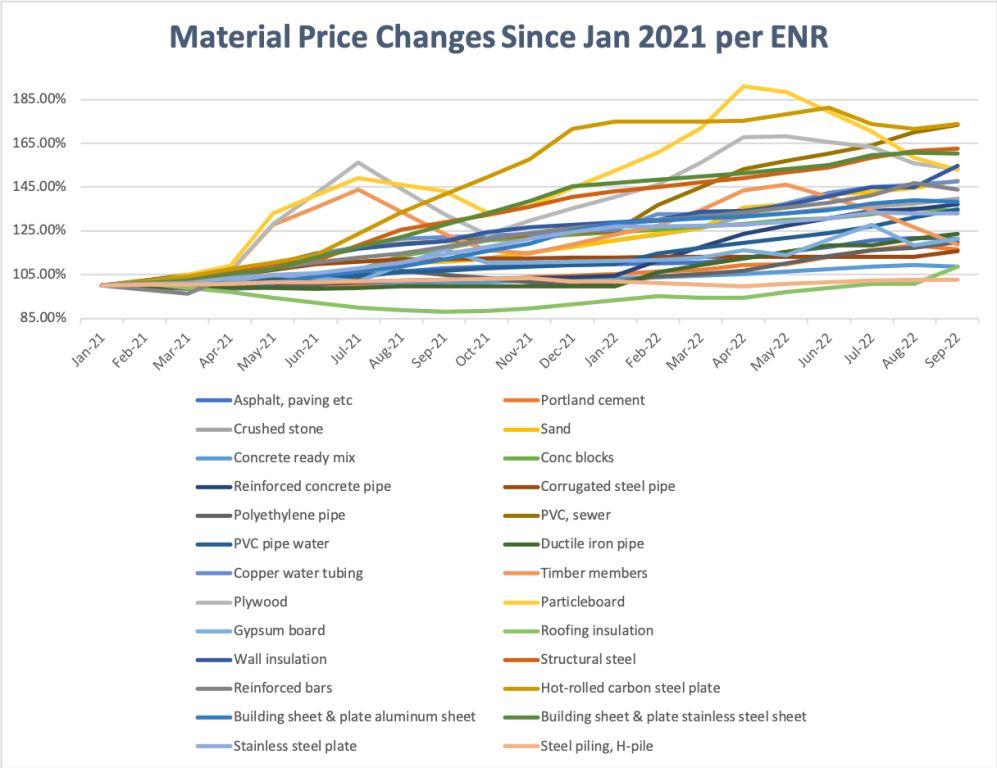

Printable PDF version
Subscribe to our newsletter
The Fed’s Difficult Task
The Supply Chain
Interest Rates on the Up and Up
Construction
Management Specialists
San Francisco, CA
(415) 981-9430 (San Francisco office)
Orinda, CA
(415) 981-9430 (Orinda office)
Rocklin, CA
(415) 872-0996 (Sacramento office)
San Diego, CA
(858) 886-7373 (San Diego office)
Redmond, WA
(206) 571-0128 (Seattle office)
Los Altos, CA
(650) 386-1728 (South Bay office)
Los Angeles, CA
(424) 343-2652 (Los Angeles, CA office)
Wicklow, Ireland
+353 86-600-1352 (Europe office)
www.TBDconsultants.com
Can the Federal Reserve bring down inflation and not create a recession at the same time? Here we look at some of the issues faces them, and what the implications are for the construction industry.
The Covid lockdowns led to major disruptions in the supply chain and, with China being a big exporter of construction materials, our industry certainly felt the impact. Construction material prices were showing wild swings as supply and demand were both changing in unpredictable ways. Then, just as it seemed that things were getting back to normal, we had the Russian invasion of Ukraine disrupting energy markets which went on to affect just about everything else.
The Omicron variants showed that Covid was not giving up easily, and once more we were seeing lockdowns in China and other Asian countries, and deliveries were slowed as drivers got infected. To add to that, we have ongoing port congestion, general labor shortages, and strange weather conditions hampering supply at a time when demand was starting to rebound.
Office construction remains in the doldrums due to the shift towards work-from-home and retail has been hit by lockdowns and the consequent move to online shopping. However, healthcare has remained strong, housing may be slowing but is still in demand, warehousing and datacenters have been benefiting from the move to online shopping, and manufacturing has recently been picking up steam too. That has been reflected in demand for new-build and renovation projects. Although the continuing inflation of construction costs has been keeping demand tempered from one side, and from the other side the ability of contractors to staff projects affects their ability to meet demand. The infrastructure package approved by Congress is starting to add to demand for materials as well, so it seems that volatility in construction material prices will remain for some time, although hopefully we have seen the worst of it.

The supply chain companies have been working to provide a more predictable service. Individual companies have been establishing networks that allow companies to have access to resources that may be underutilized by others and provide sources for materials that might otherwise be unavailable to them. Such networks build more resilience into the system, and the use of open-source software that all the companies can connect into provides better tracking of deliveries from the source of production through to the end user. Automation of warehousing is helping with the staff shortages, provides good tracking of where products are, and is providing some unexpected cost savings such as not needing to provide lighting and HVAC when buildings are not being occupied by humans.
These kinds of improvements help to speed up deliveries of materials to the construction site as well as provide the deliveries on a more predictable schedule. The improvements to the warehouse infrastructure and the provision of new warehouses also brings additional workload for the construction industry. It is true that Amazon recently announced a cutback in its plans for additional warehouses as people move back to using real brick-and-mortar shops a bit more, but other companies are still playing catch-up to Amazon’s next-day-delivery service, and even smaller retail outlets are starting to offer online services as well.
So, while supply chain issues are improving, they are not going away immediately, and construction professionals are still having to find ways to mitigate the problems. That generally involves collaborating to find options and alternative solutions where supply is more reliable. Using procurement methods such as Design-Build, Integrated Project Delivery, and Construction Management at Risk are various options that integrate the builder (the best source of information about what materials are readily available) into the design process at an early stage. As we’ve seen, such supply can change at fairly short notice, so it is a good idea to get everyone together for a value engineering session during the design process to review not only how the design is meeting the owner’s needs but also how the solutions are tying in with current supply chain conditions. Trying to source products locally can lessen the impacts of transportation, but if any of the components of such products come from further afield, that may still result in delays. Recycling materials and adapting existing buildings are other ways to reduce exposure to supply chain issues and increase your building’s sustainability rating.
Interest Rates on the Up and Up
The Fed kept interest rates low to spur commercial activity during a series of issues affecting to the markets, but now they are having to rapidly increase rates to fight inflation and here we are taking a look at what the implications are for the construction and other markets.
Design consultant: Katie Levine of Vallance, Inc.